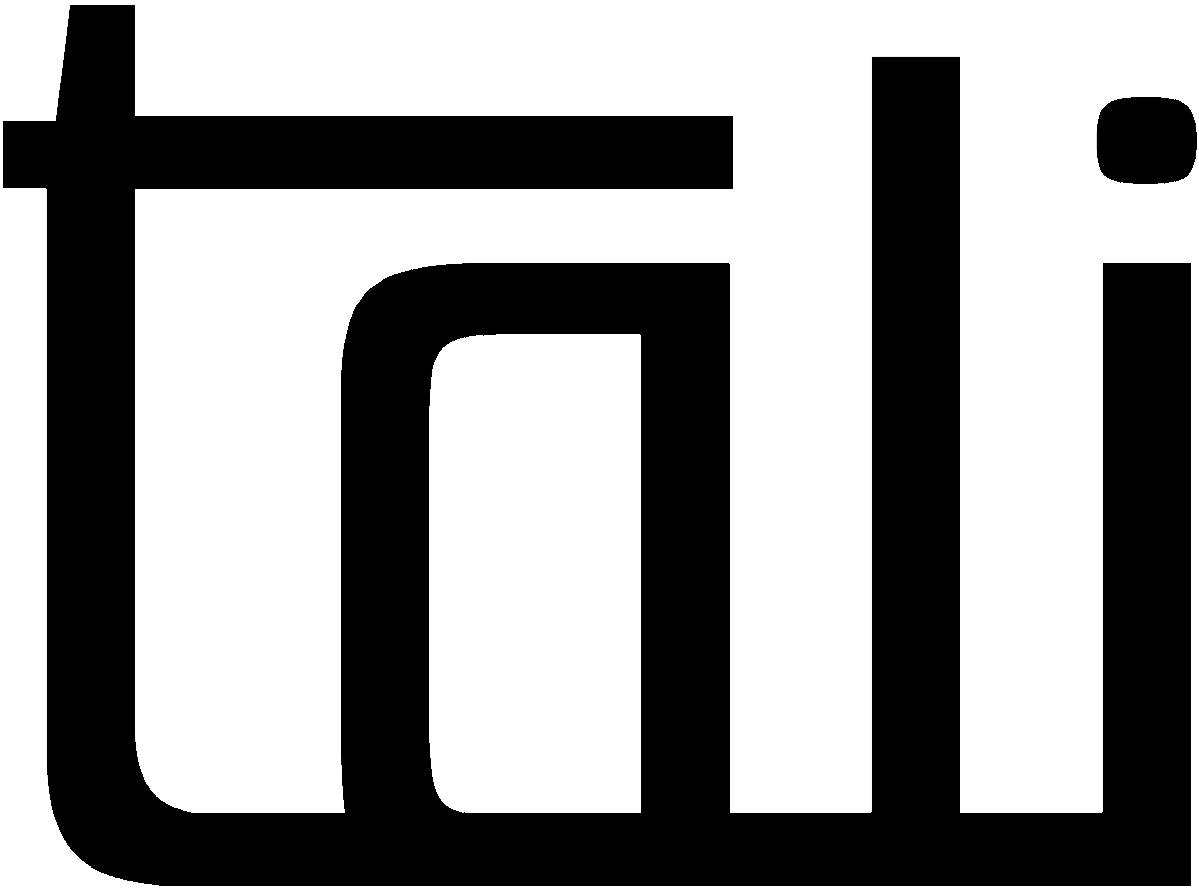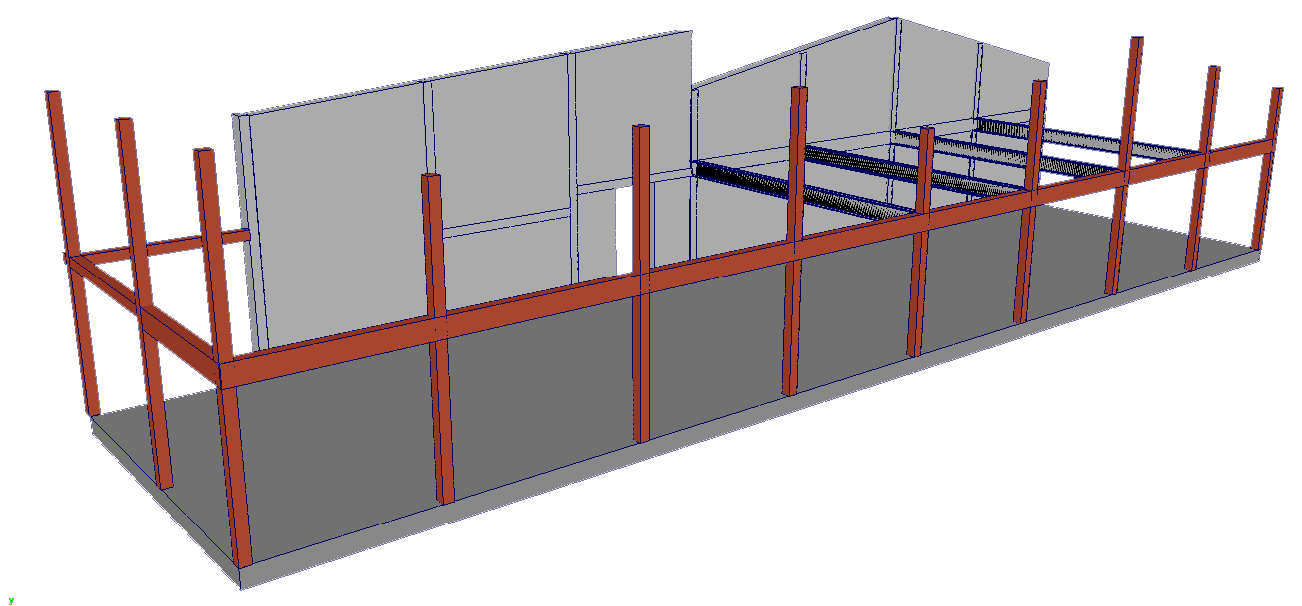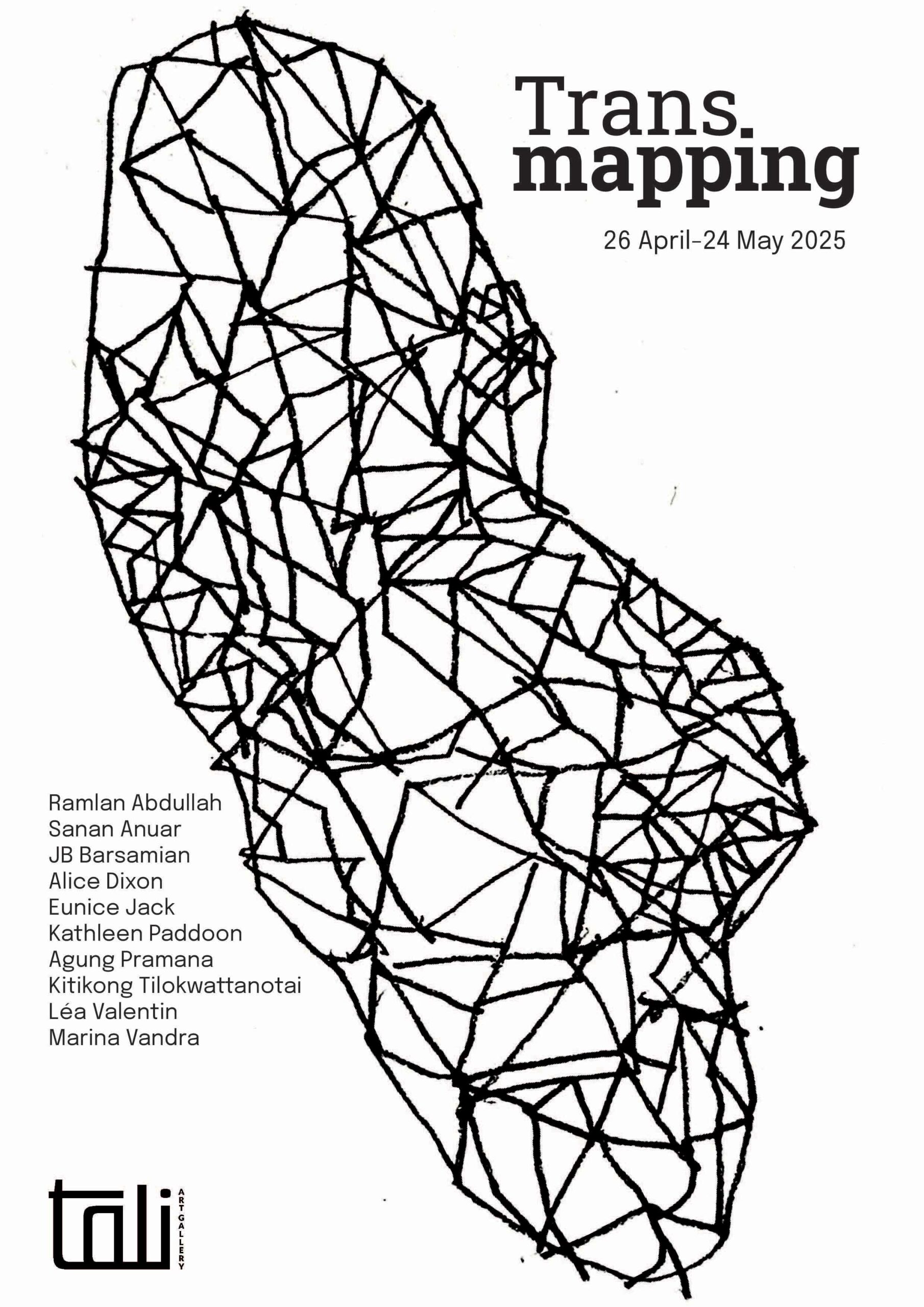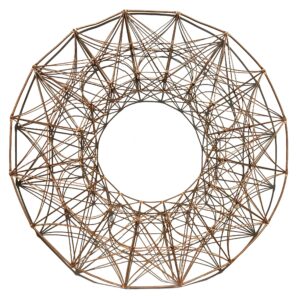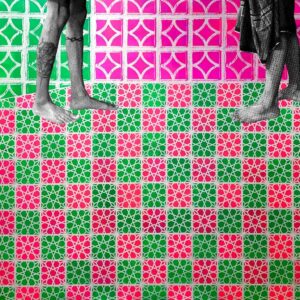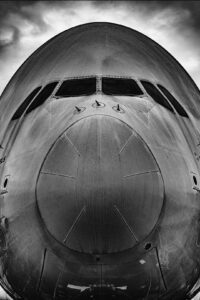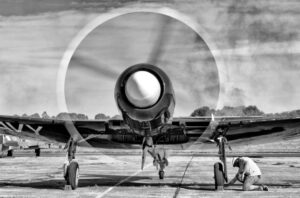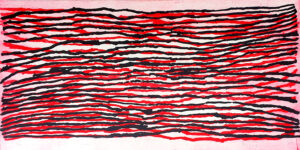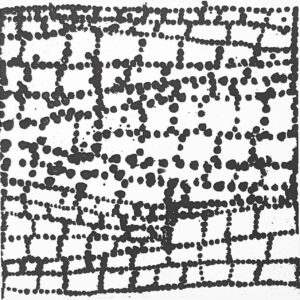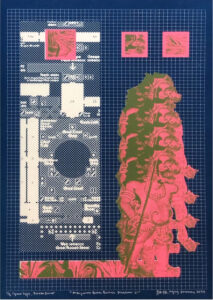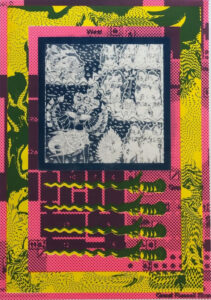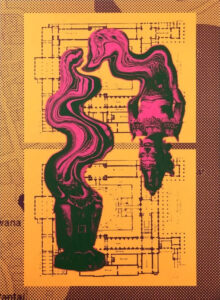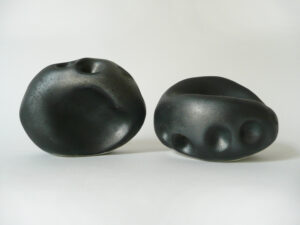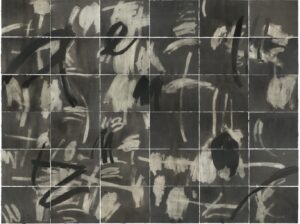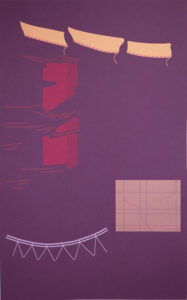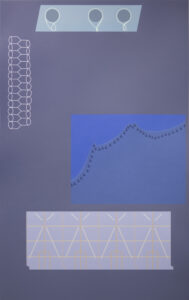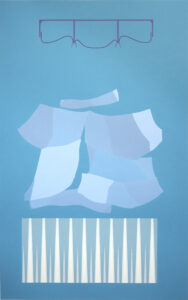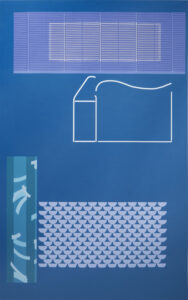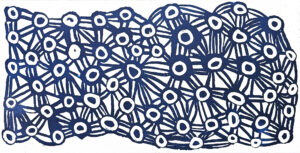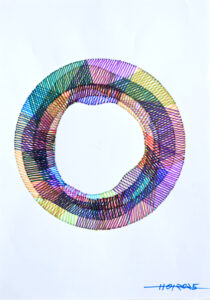Transmapping
26 April – 24 May
Artworks by :
Ramlan Abdullah,
Sanan Anuar,
Jean-Bernard Barsamian,
Alice Dixon,
Eunice Jack,
Kathleen Paddoon,
Agung Pramana,
Kitikong Tilokwattanotai,
Léa Valentin,
Marina Vandra
Showcasing artworks from Malaysia, Thailand, Indonesia Australia and France, Transmapping proposes to understand Art as a transition between spaces, from one location to another, from its surface to the viewer’s eyes.
Across installation, painting, sculpture, and printmaking, the visitor is invited to overturn the usual logic of constructing an exhibition: the works are not placed in the service of a curatorial narrative, nor is such a narrative written about them. Chosen for the experience they provoke, they are presented from a singular angle that both questions them and challenges our relationship to Art and its phenomena.
Excerpts from the catalogue
All art begins with a hand and a gaze. It only needs the space of an encounter to make the magic happen.
Transmapping is Tali’s very first exhibition. Conceived both as a manifesto and a program, it expresses the vision I wish to promote through the gallery, centred around core values such as sharing, experimentation, artistic generosity and a true love for art and people. […] Far from the image that is just its surface, easily shared through the fluid means of our globalized world, I developed a determination to consider the artwork as an object – a coherent set of factors that goes beyond mere aesthetics. Visuals shared on the internet are appearances, as are the texts that accompany them. Only matters the proximity to the living artwork. […]
Transmapping brings together artists of different ages, nationalities and backgrounds through a selection of paintings, prints, sculptures, installations, and artist’s books. In this celebration of diversity, I primarily want to convey the vision of art as a dynamic – a phenomenon offered for sharing. […] Transmapping questions the shifts between different places and states of art and, by extension, my own experience. […] I have always believed in art as a means rather than an accomplishment. It is a passage between several states, from the creator to the work, from the work to the viewer and, finally, to the collector who ultimately shifts its nature, making its life to begin anew. This is also the magic of art galleries to participate in and fuel this great creative momentum without isolating it from the world – galleries are part of the last free museums – to ensure the role of a conscious gobetween. […]
Far from any elitism, guided only by a clear vision of its role and values, uncompromising in its commitment to artists, visitors, and esteemed collectors, Tali invites you to dive into the extraordinary richness of contemporary creation with enthusiasm and gourmandise.
Thomas Martin
Owner and curator
Transmapping invites us to approach art through the transitive power of its spaces – its location, discourse, and experience. […] Brought together in the same space the artworks featured in this exhibition resonate the material and immaterial surfaces of their potential experiences, states, and relationship to the world. To question them is to map them out, attempting to situate ourselves in relation to our own experience.
[…] Above all, art is a form and a duration. Thinking of it as a point of density that brings together a multitude of factors – influences, intentions, creative context and style, all radiating in a chain reaction – leads us to understand it as both a phenomenon and a set of connections. Here starts the analysis of the established connection between these different plastique fields, whether physical or conceptual.
Transmapping questions the various shifts that occur in the artwork’s life. From everything that precedes it to its transport for exhibition, they tie its relationship to space – the one that holds it, the one created in a particular relationship between the work and the viewer, and the one it contains – which the eye and mind come to visit.
The artwork can either receive or envelop. Its place is that of an experience – it takes its place, occupies a place, proposes a place. In relation with its environment, particular moments are woven where it expands in the consciousness of an observer. Temporarily englobing their lived experience, mind, and memory, its form becomes fluid as it detaches to move through the consciousness of a new experience.
Place can constitute all or part of its subject. Contemporary Aboriginal works ( Alice Dixon, Kathleem Paddoon, Eunice Jack) that depict a particular site connected to the belief of the Tjukurrpa question the transparency between the subject and the surface of the work. Where the experience takes place, the beginning of meaning is defined. For someone external to the original cultural location, who recognizes no permeability between these two states, the topological and spiritual references become ethnographic, and the map, a motif.
The artwork can fully play with the idea of displacement – between uprooting and reclamation – making it the site of a cultural redefinition ( Agung Pramana). Through composition forms are assembled that – laden with their own history – project a new narrative and relocate a discourse. The artwork is no longer simply transported; it is disseminated.
The ambivalent movement of oneself toward the work and that of the work beyond oneself questions the relationship between the intimate and an unknown whole. Invited to cross a threshold and to move within a closed surface as one would inhabits a place ( Marina Vandra), the viewer can be absorbed in a fusion within the vibratory field of the work. The question of its physical limits arises when the line that marks its boundaries no longer exists ( Léa Valentin). When each element of an installation carries its own fragment of surface and when the void becomes part of the space inhabited by the artist, the plastic magnetism of the work bends surrounding trajectories and repolarizes its environment.
Void’s magic, which is not an anti-volume but a transitive field tinged with its edges, leads the eye from rebounds to depths to question the place of the gaze. The work enriches itself in the interstice ( Ramlan Abdullah), not through transparency, but through surpassing. By allowing one to grasp a phenomenon, in a freed vision its porous surface no longer saturates, the contact point with the viewer is decentred and projected through it.
The work sometimes plays with its spatiality to deceive the eye, not out of malice but to signify – by questioning the comfort of the gaze – an uncertain relationship with the world. To disrupt certainties, to take one elsewhere and surprise. The disturbed perspective keeps the work on the surface ( Sanan Anuar), and through this flatness, refuses to offer refuge to those who seek answers within it.
The fragmentation of works can answer to the delineated fragmentation of maps and their arrangement in distinct zones, each piece contributing to an order proposed to the viewer. If the motifs question the continuity of identity and cultural surfaces ( Sanan Anuar, Aboriginal art), the sign can point to a desire for communication through the singularity of the gesture that originated it ( Kitikong Tilokwattanotai). The space of the work is one of a journey that the gaze traverses in a performative echo.
The traces of acts that mark the making of the work can also appear as the results of movements in the world of objects that the artist appropriates, to repropose them in a new state. The scoria and outcrops of lived experiences ( Jean-Bernard Barsamian) are hooks to other trajectories – to other expanses that tell nothing but their impact on hard matter.
Thinking space in art is first and foremost transiting from one state to another – from thought to gaze, from gesture to sensation – and then to unfold each corner through experience. From this transitive mapping that always demands – at the risk of being lost – to situate oneself, vast fields of pleasure for the senses and the mind deploy.
- Ramlan Abdullah – Multiplicity – Non-traditional painting I
- Sanan Anuar – Hanuman and the Priest
- Jean-Bernard Barsamian – Untitled [A380]
- Jean-Bernard Barsamian – Untitled [Sea Fury]
- Jean-Bernard Barsamian – Untitled [Caravelle]
- Jean-Bernard Barsamian – Untitled [Douglas DC-3]
- Alice Dixon – Tali Tali
- Eunice Jack – Kuruyultu
- Kathleen Paddoon – Nakarra Nakarra
- Agung Pramana -Menjarah Balik British Museum VI
- Agung Pramana – Menjarah Balik British Museum V
- Agung Pramana – Menjarah Balik British Museum IV
- Agung Pramana – Menjarah Balik British Museum I
- Léa Valentin – Galets
- Kitikong Tilokwattanotai – April Lines 2006
- Marina Vandra – Habiter 7
- Marina Vandra – Habiter 5
- Marina Vandra – Habiter 4
- Marina Vandra 6 Habiter 1
- Ramlan Abdullah – Sketch
- Alice Dixon – Tjilkamala
- Ramlan Abdullah – Sketch
- Ramlan Abdullah – Sketch
